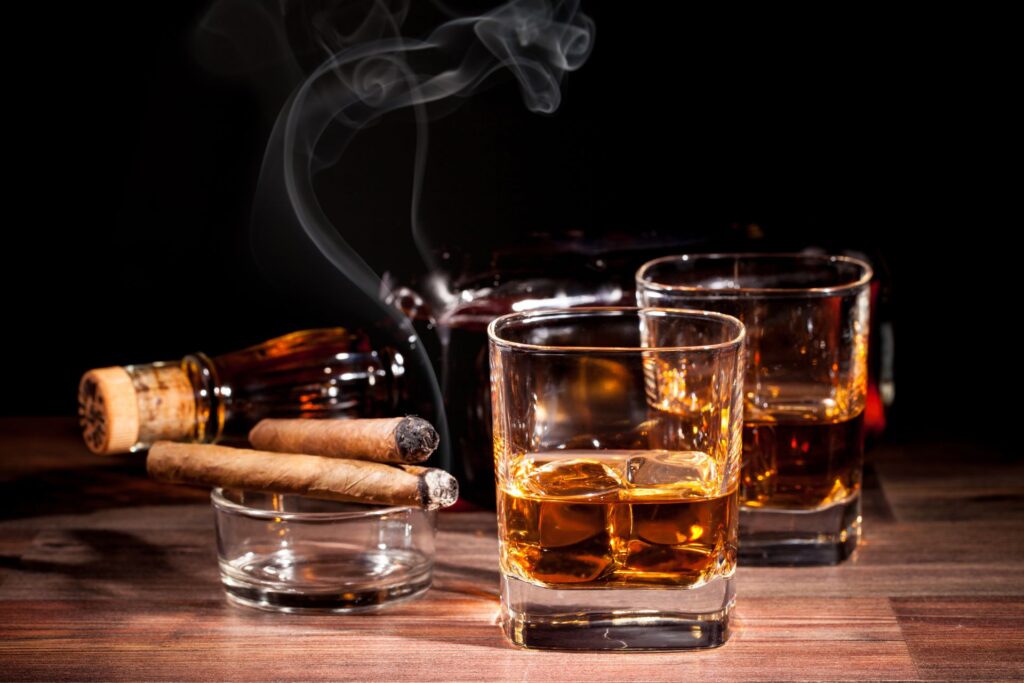Bourbon Before Prohibition: A Spirited Journey Through History

Bourbon, with its rich flavors and deep amber hues, stands as a symbol of American heritage and craftsmanship. But before it became the beloved spirit we know today, bourbon underwent a fascinating journey through history, shaped by pioneers, settlers, and distillers. In this blog post, we’ll embark on a spirited exploration of bourbon’s origins and evolution prior to the era of Prohibition.
Early Beginnings:
The roots of bourbon can be traced back to the late 18th century in the rugged frontier of Kentucky. It was here, in the fertile valleys and rolling hills, that settlers began distilling grains, primarily corn, to create whiskey. The abundance of limestone-filtered water and the fertile soil proved to be ideal for growing corn, a key ingredient in bourbon production.
Birth of Bourbon:
The exact origins of the term “bourbon” are somewhat murky, but one popular theory attributes it to Bourbon County, Kentucky, where whiskey production thrived in the late 1700s. Another theory suggests that the name was derived from Bourbon Street in New Orleans, where Kentucky whiskey was shipped down the Mississippi River.
Regardless of its etymology, bourbon quickly gained popularity among frontiersmen and settlers due to its smooth flavor and robust character. Distillers began experimenting with different mash bills and aging techniques, laying the foundation for what would become America’s native spirit.
Rise of Commercial Distilleries:
By the early 19th century, bourbon production had transitioned from small-scale operations to larger commercial distilleries. Innovations such as the continuous still and the advent of charred oak barrels revolutionized the industry, allowing for more efficient production and enhanced flavor development.
Prominent distilleries such as Old Forester, Buffalo Trace, and Woodford Reserve emerged during this period, each contributing to bourbon’s growing reputation as a premium spirit. As demand surged, Kentucky solidified its status as the epicenter of bourbon production, earning the moniker “Bourbon Country.”
Legends and Icons:
Throughout the 19th century, bourbon became intertwined with American folklore and legend. Figures like Elijah Craig, credited with aging whiskey in charred oak barrels, and Jacob Beam, founder of the iconic Jim Beam distillery, left an indelible mark on bourbon history.
Meanwhile, the Kentucky Bourbon Trail, established in the late 20th century, began attracting whiskey enthusiasts from around the world, offering a glimpse into the storied past and vibrant present of bourbon production.
Prohibition and Rebirth:
The dawn of the 20th century brought about a dark chapter in bourbon’s history with the onset of Prohibition. The nationwide ban on alcohol dealt a severe blow to the bourbon industry, forcing many distilleries to shutter their doors or transition to alternative products.
However, bourbon’s spirit proved resilient, and with the repeal of Prohibition in 1933, distillers once again began producing America’s native spirit. The post-Prohibition era saw a resurgence of bourbon production, marked by innovation, craftsmanship, and a renewed appreciation for this timeless spirit.
The history of bourbon prior to Prohibition is a testament to the resilience, ingenuity, and enduring appeal of America’s native spirit. From its humble beginnings on the Kentucky frontier to its status as a global icon of craftsmanship, bourbon has remained steadfast throughout the centuries, enriching the lives of whiskey lovers and connoisseurs worldwide. As we raise our glasses to toast the legacy of bourbon, let us also celebrate the pioneers and distillers who have preserved its rich heritage for generations to come.